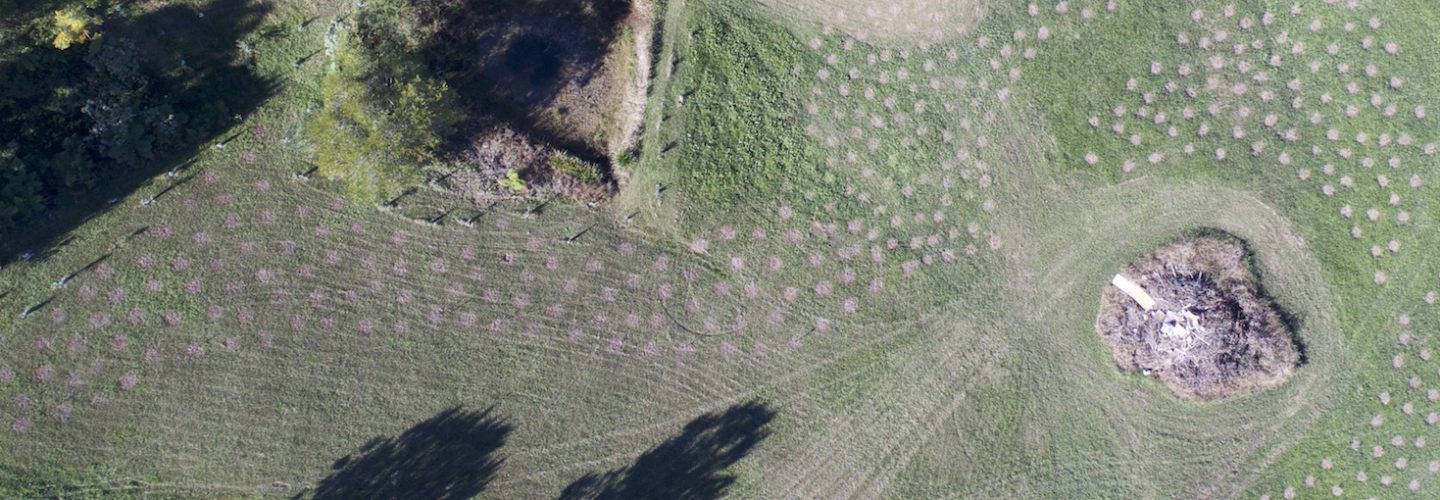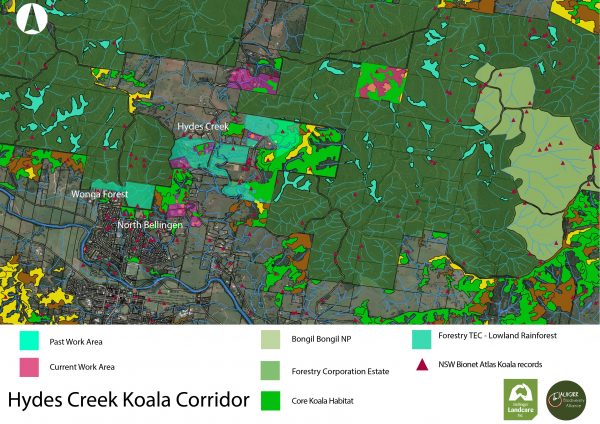Jaliigirr Koala Habitat Restoration – Hydes Creek to Bongil Bongil 2018-19

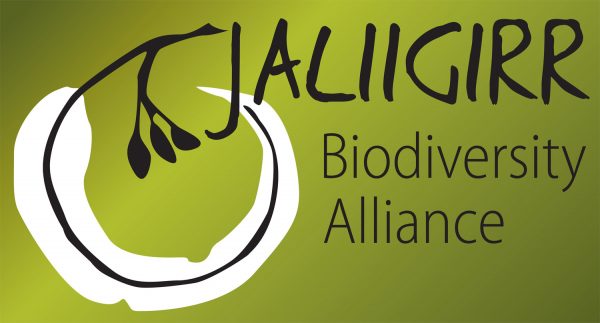
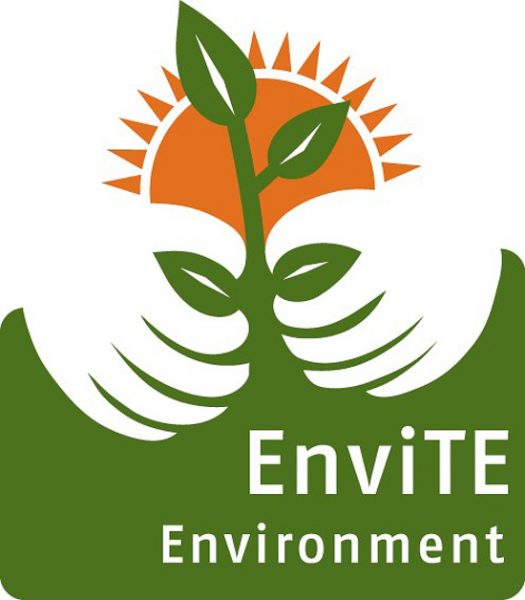
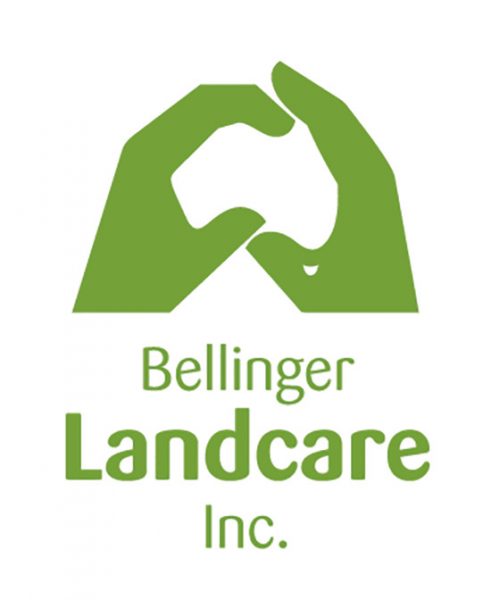
Jaliigirr Biodiversity Alliance partners have been working extensively to improve the condition, structure and connectivity of critical Koala habitat in the region.
The Hydes Creek to Bongil Bongil connection aims to improve habitat connectivity at landscape scale and reduce pressures on one of the most significant Koala populations in NSW, whilst reducing the impediments to Koalas moving out of Bongil Bongil National Park, a key Koala nursery ground and one of the most important breeding populations of Koalas in the state.
This project is a combined effort of partners working across multiple tenures – National Park, State Forest and Private land, to provide a linkage for Koalas between our rich coastal Eucalypt forests all the way through to the great escarpment.
The lead partners in this Project are Envite Environment and Bellinger Landcare, with Envite managing habitat restoration and connectivity works on National Parks and Forestry land, and Bellinger Landcare managing habitat restoration and connectivity works on private properties in the Hydes Creek area.
Read more below….
 Koala Public Lands Sites-Bongil Bongil National Park and Pine Creek State Forest
Koala Public Lands Sites-Bongil Bongil National Park and Pine Creek State Forest
This NSW Environmental Trust project funded over two years through the Restoration and Rehabilitation program improved the condition and connectivity of 90 hectares of core koala habitat through works across 3 priority sites within 8ha of Pine Creek State Forest and Bongil Bongil National Park. The project area has been identified nationally as one of the most critically important to maintain koala population viability within our region. Jaliigirr partners EnviTE Environment delivered activities that achieved habitat restoration, riparian zone recovery & canopy enhancement – to secure long term food source & connectivity for koalas. Native vegetation communities developed improved structure, more closely reflecting that of undisturbed vegetation communities. Capacity to maintain areas was increased following implementation of labour intensive primary bush regeneration works resourced by this project.Specifically the project achieved enhanced habitat linkages for safe movement of koalas and other species. Habitat fragmentation is one of the key threats to this species. Weeds are also a key threatening process; WoNS Lantana is highly invasive and found in the project area.Lantana can impede koala movement and access to food trees. It also restricts regeneration of native species due to forming dense monocultures.The area is part of a significant corridor for koala movement across the landscape and saw improvement through regeneration of 8ha and revegetation of 1000 trees. Integrated partnerships were fostered for the conservation and welfare of koalas. The project also delivered the objectives of Forestry Corporation of NSW Management Policy, Koala Management Plan for Pine Creek State Forest and the NSW NPWS management objectives of Bongil Bongil National Park Plan of Management
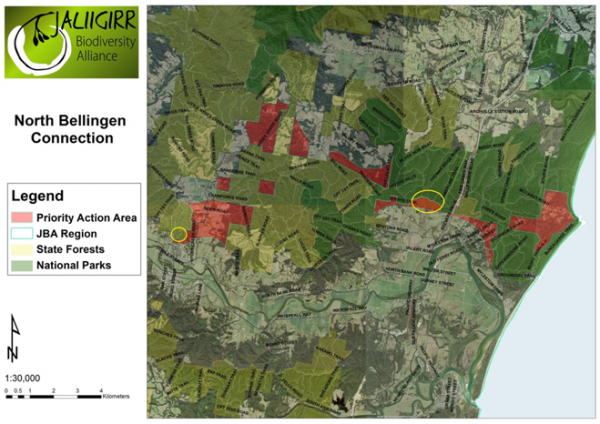
North Bellingen Connection: Hydes Creek to Bongil Bongil
Revegetation- Koala feed trees.
Koalas feed exclusively on a few preferred tree species which are of primary and secondary importance. Access to and the density of food trees influences the distribution and abundance of koalas in an area. If primary tree food species are not present or occur in low density, koalas must rely on secondary food tree species, but the number of animals per hectare is lower. Other tree species, including non-eucalypts, also provide seasonal or supplementary food. In the Bellingen area Forest Oak has been documented as being browsed by koalas (Smith and Andrews 1997) and should be considered as an important sub canopy species requiring protection in areas of identified preferred koala habitat.
In stage one of the project during March-April of 2018 one thousand primary koala feed trees were planted at the site with funding provided by the NSW Environmental Trust. NSW Forestry Corp supplied the plant stock as an in kind contribution for both projects. The trees were staked and guarded using plastic mesh guards and two timber stakes per tree.
The revegetation species selection was based on preferred feed trees for koalas as identified in Bellingen Shire Council Coastal Area Koala Management Strategy.
Primary koala food trees: Tallowwood (Eucalyptus microcorys), Swamp Mahogany (Eucalyptus robusta), Forest Red Gum (Eucalyptus tereticornis) Small-fruited Grey Gum (Eucalyptus propinqua)
Secondary koala food trees: Flooded Gum (Eucalyptus grandis) Sydney Blue Gum (Eucalyptus saligna) Flooded Gum and Blue Gum should be considered as Primary Food Trees where they occur as a co-dominant canopy species with Tallowwood.
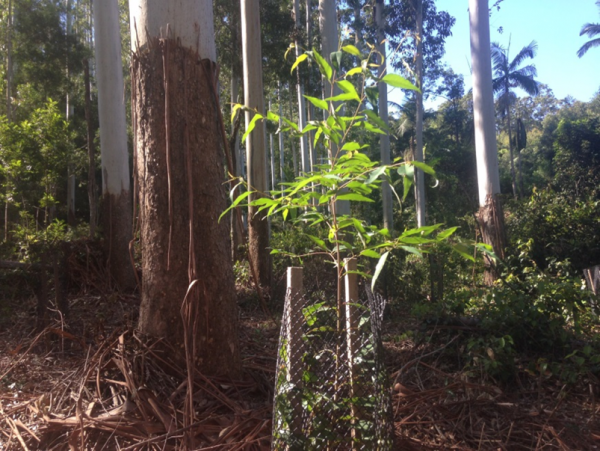
Tallowwood (Eucalyptus microcorys) planted amongst Flooded Gum (Eucalyptus grandis) in the forestry buffer zone at Pine Creek SF
 Private landholder sites – Hydes Creek area
Private landholder sites – Hydes Creek area
With funding from the NSW Environmental Trust Restoration and Rehabilitation program, Bellinger Landcare has been working with 6 landholders in the Hydes Creek area to improve the condition of habitat and strengthen connectivity between patches of core Koala habitat & State Forest.
Map of works areas and how the corridor connects patches of vegetation across the landscape
Sites and works areas on private land have been selected to provide the greatest connectivity in ‘Key linkage areas’ identified by the NSW Office of Environment and Heritage Koala habitat mapping and the Bellingen Koala Plan of management.
This important linkage allows the passage of Koalas from nursery grounds in Bongil Bongil National Park through Pine Creek and Tuckers Nob State Forests. Working as part of Jaliigirr Biodiversity Alliance with Envite Environment Inc, NPWS NSW and Forestry Corporation, forming a significant Koala passage in Northern NSW by allowing the dispersal of Koalas and in turn genetic diversity from Bongil Bongil breeding populations through Bindarri and Dorrigo National Parks south across the escarpment, creating a contiguous forested corridor extending to Oxley Wild Rivers, Werrikimbe and Cottan-Bimbang National Parks in the Port Macquarie Region.
